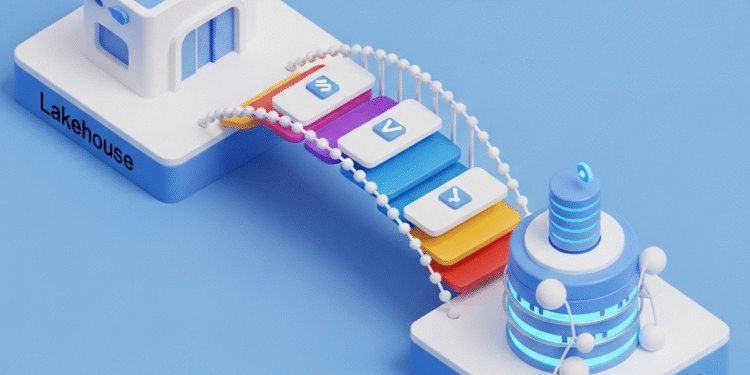I recently came across Synced Tables and I am loving the features. It’s a game changer in the Unified Data architecture. It saves a lot of money, esp in the use cases where 24*7 querying is needed from Lakehouse, you can sync that data to Lakebase and use that instead.
The traditional divide between operational and analytical data systems has been a persistent challenge in modern data architecture. While organizations have long relied on separate Online Transaction Processing (OLTP) databases for real-time operations and data warehouses for analytics, this segregation creates complexity, increases costs, and introduces latency that can hinder real-time decision-making. Databricks Lakebase represents a revolutionary step toward eliminating this divide, introducing a fully-managed PostgreSQL database specifically designed for the AI era.
What is Databricks Lakebase?
Databricks Lakebase is a fully-managed PostgreSQL OLTP database engine that integrates seamlessly into the Databricks Data Intelligence Platform. Unlike traditional databases that haven’t seen significant innovation in decades, Lakebase is built from the ground up with modern architectural principles that address the unique demands of AI applications and data-intensive workloads.
At its core, Lakebase is a new category of operational database that combines the familiar PostgreSQL experience with the scalability and flexibility of the lakehouse architecture.
This isn’t just another managed database service; it’s a fundamental reimagining of how operational and analytical systems can work together.
Synced Tables: The Bridge Between Operational and Analytical Data
The real power of Lakebase becomes apparent through its synced tables functionality. Synced tables are Unity Catalog read-only PostgreSQL tables that automatically synchronize data from Unity Catalog tables to your Lakebase database instance. This creates a seamless bridge between your analytical lakehouse and operational systems.
How Synced Tables Work
Synced tables operate through managed Lakeflow Declarative Pipelines that continuously update PostgreSQL tables with changes from source Delta tables. The synchronization process supports three distinct modes:
Snapshot Mode: Takes periodic snapshots of the entire source table, providing atomic updates to the synced table.
Triggered Mode: Performs incremental updates that can be manually triggered or scheduled, processing only changes since the last pipeline execution.
Continuous Mode: Provides real-time streaming updates, applying changes to the synced table as they occur in the source table.
Creating and Managing Synced Tables
Creating a synced table is straightforward through the Databricks UI:
1. Navigate to the Catalog in the workspace sidebar
2. Select the Unity Catalog table you want to sync
3. Click Create > Synced table
4. Configure the target catalog, schema, and table name
5. Select your database instance and PostgreSQL database
6. Define the primary key (required for efficient operations)
7. Choose your synchronization mode
8. Configure pipeline settings
The process can also be automated using the REST API, enabling programmatic creation and management of synced tables at scale.
Performance and Limitations
Synced tables deliver impressive performance characteristics: (By the time of this writing)
• Continuous sync mode refreshes data at minimum 15-second intervals
• Support for approximately 1,200 rows per second per Capacity Unit for continuous writes
• Bulk writes can achieve up to 15,000 rows per second per Capacity Unit
• Sub-10ms latency for read operations
However, there are important considerations:
• Each synced table can be up to 2 TB in size
• Maximum of 20 synced tables per source table
• Each synchronization can use up to 16 database connections
Real-World Applications and Use Cases
AI Agent Development
Lakebase’s branching capabilities make it ideal for AI agent development. Agents can create branches for experimentation, test different approaches, and easily revert to previous states if needed. This supports the iterative nature of AI development while maintaining data integrity.
Feature Serving
For machine learning applications, Lakebase excels at feature serving — providing low-latency access to precomputed features and model predictions. The tight integration with Unity Catalog ensures that features are governed and discoverable across the organization.
Real-Time Analytics
By syncing analytical results from Delta tables to Lakebase, organizations can serve real-time insights through applications while maintaining the ability to perform complex analytics on historical data in the lakehouse.
Operational Reporting
Traditional operational databases often struggle with complex reporting queries. Lakebase allows organizations to offload these queries to optimized synced tables while maintaining transactional integrity for operational workloads.
Governance and Security with Unity Catalog
One of Lakebase’s most compelling features is its deep integration with Unity Catalog. This integration provides:
Centralized Access Control
All access policies defined in Unity Catalog automatically apply to Lakebase instances, ensuring consistent security across operational and analytical systems.
Automated Lineage
Unity Catalog automatically captures column-level lineage for data flowing between Delta tables and synced tables, providing complete visibility into data movement and transformations.
Data Discovery
The familiar Catalog Explorer interface allows users to discover and understand Lakebase tables using the same tools they use for other data assets.
Pricing and Cost Optimization
Lakebase follows Databricks’ pay-as-you-go pricing model using Databricks Units (DBUs). The serverless architecture provides significant cost advantages:
• No upfront costs or long-term commitments
• Per-second billing ensures you only pay for actual usage
• Scale-to-zero capability eliminates costs during idle periods
• Volume discounts available through committed use contracts
The Future of Unified Data Architecture
Databricks Lakebase represents more than just another database option — it’s a paradigm shift toward unified data architecture. By eliminating the traditional boundaries between operational and analytical systems, Lakebase enables organizations to:
• Reduce architectural complexity by consolidating data infrastructure
• Improve time-to-insight through seamless data integration
• Lower total cost of ownership through serverless, pay-per-use pricing
• Accelerate AI development with modern tooling and branching capabilities
• Enhance data governance through centralized control and lineage
As AI continues to reshape how organizations interact with data, the need for systems that can seamlessly bridge operational and analytical workloads becomes increasingly critical. Databricks Lakebase, with its innovative synced tables functionality, positions itself as a foundational technology for the next generation of data-driven applications.
The introduction of Lakebase signals a broader industry trend toward convergence of operational and analytical systems.
As organizations increasingly rely on real-time insights for decision-making, the artificial boundaries between OLTP and OLAP systems become counterproductive. Lakebase offers a glimpse into a future where these boundaries dissolve, enabling more agile, cost-effective, and powerful data architectures. For organizations looking to modernize their data infrastructure, Databricks Lakebase and synced tables represent not just an incremental improvement, but a fundamental reimagining of how operational and analytical systems can work together in the AI era.






